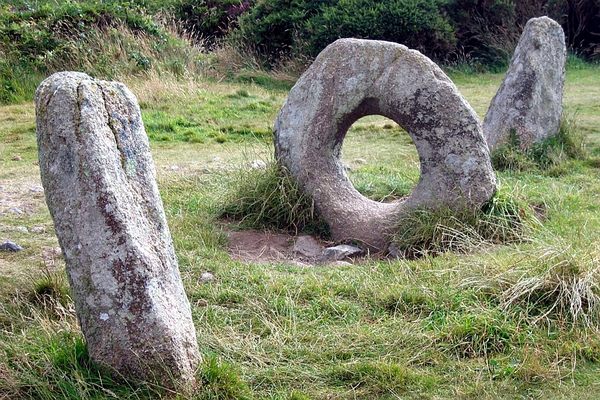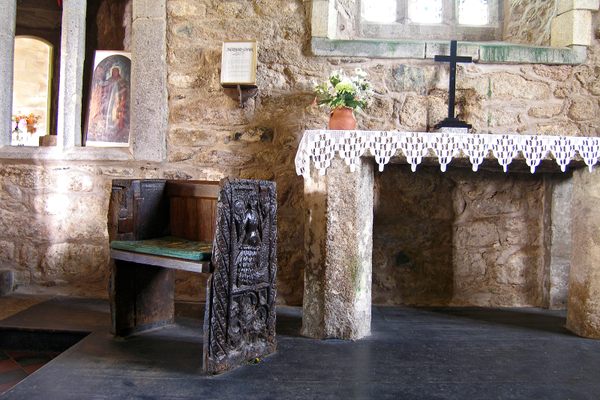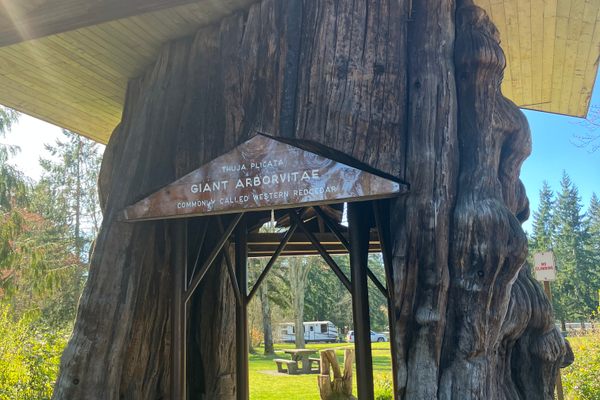Madron Well
Legend says this ancient pagan site can cure all ailments.
Cornish legend is, well, legendary. It runs through Cornish culture like tin in its land, and mystery awaits around every corner.
Less than a mile southeast from Lanyon Quoit sits Madron Well, where the water that bubbles from an underground spring is reputed to have healing powers. While the spring itself isn’t easy to see, it is marked by a nearby wishing tree festooned with colorful strips of material known as clooties and more obscure items such a toys or wooden shapes (think a colorful version of Blair Witch).
Many pre-Christian religions venerate wells and springs as sacred sites. Here under the shade of the clootie tree, Pagan custom dictates that after the ritual has been complete, the clootie placed by the pilgrim will disintegrate, and so too will the illness or disability.
Around 100 yards from the well stands a chest-high rectangular structure open to the elements and covered in moss and vegetation. To one side is a stone dais that is recognizable as an altar and gives away this structure’s purpose as a chapel. The current structure was built in the 12th century atop an old pagan site and is named, like the nearby village, after the Cornish hermit Madron, who became the patron saint of cures and protection against pain. The chapel became a baptistery, and the nearby well supplied the necessary water via a leat, or artificial waterway. The chapel’s north facing entrance is unusual in Christian belief, as it is considered the devil’ door.
For the more inquisitive, there is a second, more indistinct well about half a mile across a muddy field from the chapel. This is the original well, where many legends abound, including one about a paralyzed local named John Trelille, who, in the 12th century, bathed three times in the well, after each time spending the night on a nearby hillock named St Madron’s bed. At the end of the ritual, he was cured of paralysis. His miraculous recovery was verified by the Bishop of Exeter, and the resultant publicity attracted pilgrims throughout medieval times.
Unmarried women would also visit the site and place a straw crucifix upon the surface of the well water. The number of bubbles rising to the surface would indicate the number of years until they would be married. This ceremony was said to have stopped in the 19th century.
Know Before You Go
There are a number of small trail signs around the site. Cars can be parked in various laybys in and around the nearby village of Madron.
Both this site and Lanyon Quoit can be visited within a short distance.
Plan Your Trip
The Atlas Obscura Podcast is Back!



















Follow us on Twitter to get the latest on the world's hidden wonders.
Like us on Facebook to get the latest on the world's hidden wonders.
Follow us on Twitter Like us on Facebook